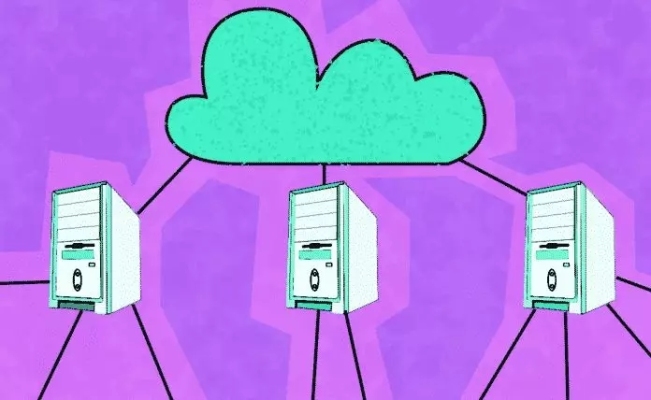The latest hot topic in the field of Industrial Internet of Things (IIoT) is edge computing. More and more applications require computer processing to be closer to sensors to reduce latency and improve efficiency. Catalyzed by this high demand, the development of edge computing has gradually matured.


Edge computing is a mesh network of microdata IoT centers that process and store critical data locally before moving it to a central data center or cloud repository. In this way, edge computing can help optimize cloud computing systems and reduce the load on central data centers, making them immune to data transmission interruptions.
Through a containerized microservice architecture, the cloud server becomes the control node of the intelligent edge device, performing summary analysis while leaving real-time decision-making to the edge server.
IoT devices at the edge must take on the responsibility for computing, storage, and network connectivity. Depending on demand, IoT devices send some or all of the data generated by sensors to the cloud.
1. Which situation requires edge computing?
● Poor connectivity of IoT devices;
● Applications rely on machine learning and require large amounts of data to provide rapid feedback;
● For security and privacy reasons, it is necessary to keep data within the factory;
● The raw data at the edge needs to be preprocessed to reduce the amount of calculation.
Typical use cases of edge computing include facial recognition, intelligent navigation, etc. It’s worth noting that edge computing is ineffective if IoT devices must be constantly connected to a central cloud.
2. How does edge computing differ from fog computing?
Fog computing refers to operations based on the interaction between edge devices and the cloud. Edge computing refers to IoT devices with computing capabilities; they act as a gateway between sensors and people inside the factory. In a sense, edge computing is a subset of fog computing.
Edge computing brings technology closer to end-user applications so that devices do not need to be constantly connected to a centralized cloud infrastructure for instructions or analysis, but are instead given the ability to complete these tasks independently.
3. Security of edge computing
The level of security associated with edge computing is generally higher because the data is not sent over the network to the cloud. In edge computing, data is dispersed, which makes it harder to attack.
Because edge computing is a relatively new technology, traditional issues remain, including login credentials, security vulnerabilities, lack of updates, and less-than-ideal network architecture.
On the other hand, edge devices are inherently vulnerable to hackers. This should be kept in mind when designing a security architecture.
The system formed by cloud computing and edge computing can store and process data more efficiently.
The following safeguards can be taken to protect sensor data:
● Insert Gaussian noise with a certain variance into the data to reduce the chance of sniffing attacks;
● Split data into chunks and scramble them to avoid MITM (Man-in-the-Middle, man-in-the-middle of data transmission) attacks;
● Public key infrastructure that encrypts each block of data.
(1) Identity verification
IoT devices, especially those in smart grids, are vulnerable to data tampering and spoofing attacks through public key infrastructure (PKI), Diffie-Hellman key exchange, intrusion detection techniques and the manipulation of modified input values. monitoring to prevent this attack.
(2) Data encryption
For data at rest, the AES algorithm with a key size of 256 bits can be used to ensure security, while the Secure Socket Layer (SSL) protocol can be used to establish secure communication between the server and client.
(3) Network monitoring
Since a large number of heterogeneous IoT devices transmit and process heterogeneous data at multiple levels (hypervisors, operating systems, and applications), artificial neural networks (ANS) and rule matching can be used for threat detection.
(4) Security vulnerabilities
Leveraging machine learning techniques can be used to accurately identify security attacks. These techniques use benign software models to train algorithms such as support vector machines, after which any abnormal behavior can trigger a detection event. In addition to stealing data or modifying core system functionality, the presence of malware can degrade system performance.
In the healthcare field, it is critical that if a Fog system is compromised, critical data and functions remain protected by a tight and complete security system, and that the system is isolated in the event of malicious activity within the host operating system.
4. Edge computing: a catalyst for the convergence of IT and OT
IT consists of computing/processing systems and data storage. OT includes the hardware and software required to run and monitor production systems, such as SCADA (Supervisory Control and Data Acquisition), DCS (Distributed Control System) and ICS (Industrial Control System). The latest technologies aim to bring IT and OT into a common domain for easy communication and action. Edge computing is accelerating this convergence.
Companies at the forefront of the Industrial Internet of Things (IIoT) have established a common foundation for IT and OT to function as a unified system. For example, health monitors are aggregated systems. Edge computing, which performs calculations close to sensors (hardware), closely integrates IT and OT.
With IT (especially data science and ML models), users can build algorithms that continuously learn and adjust in order to provide better services. OT can automate their workflow while providing better monitoring and analysis of condition anomalies. Factories that have integrated OT/IT teams have achieved successful results such as reduced energy consumption, higher product quality and asset health, and less downtime.